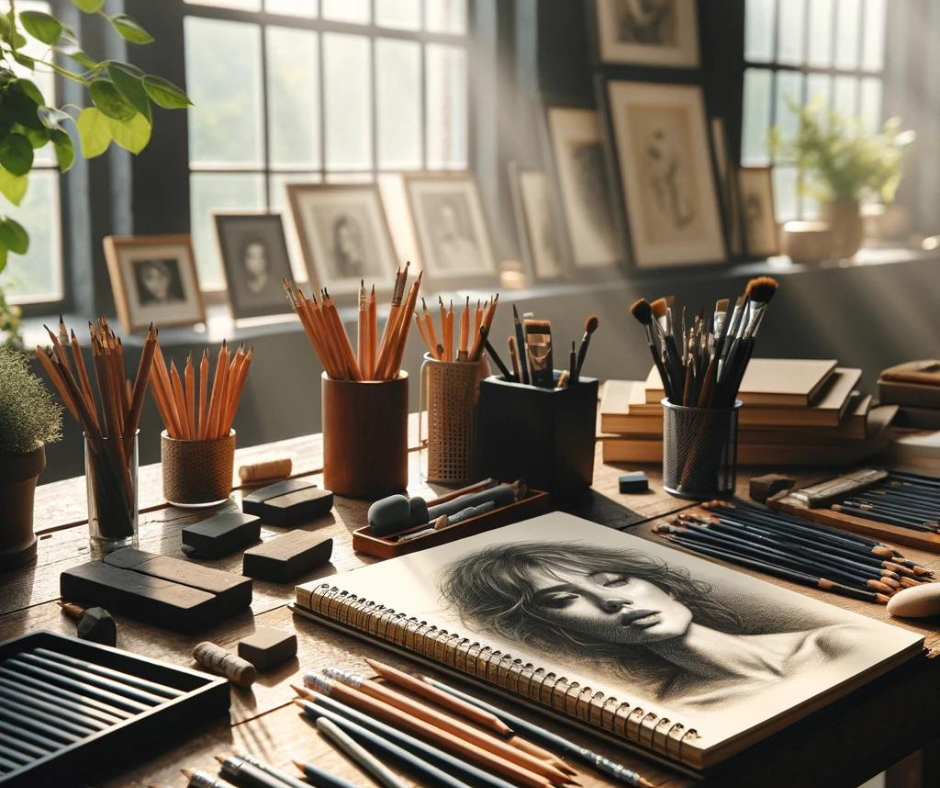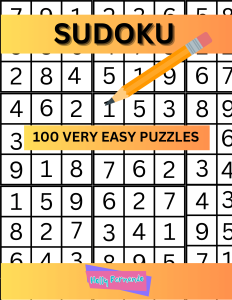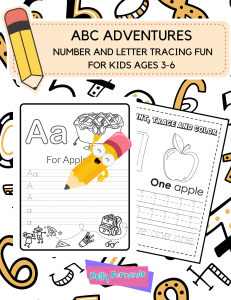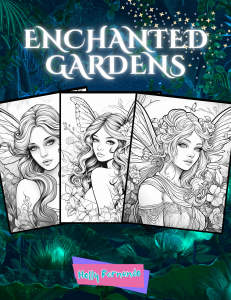Drawing portraits is an art form that captures more than just the outward appearance of its subject; it delves into the essence, emotion, and intricate details that make each face unique. Many artists, both novices and seasoned professionals, strive to master this skill, seeking to bring their subjects to life on paper. If you’re on this artistic journey, aiming to learn how to draw portraits or enhance your existing skills, you’re in the right place. This guide walks you through the foundational steps of portrait drawing, shares effective methods, introduces essential tools, and offers practical self-portrait advice.
As you embark on your artistic journey, mastering the art of portrait drawing is about more than capturing a likeness; it’s about bringing to life the essence and emotion that make each subject unique. With “Learn to Draw like a Master Artist,” you can take this journey further. Offering over 42 hours of comprehensive, easy-to-follow training videos, this course is designed to enhance your skills beyond what you’ve imagined. With lifetime access, watch anytime, anywhere, on any device, ensuring that you can refine your techniques at your own pace. Perfect for both novices and seasoned artists, this step-by-step instruction is your gateway to drawing better than ever before.
Understanding the basics of how to draw portraits is crucial, regardless of your current skill level.
It sets the groundwork for building your technique, refining your style, and producing captivating works of art. In the following sections, we’ll explore the critical aspects of how to draw portraits, from initial sketches to final touches, ensuring you have the knowledge to progress on your artistic path.
Before diving into the complex details of facial features or the subtle play of light and shadow, every portrait begins with a simple step: starting the drawing. This initial phase is all about laying down the basic proportions and structure of the face, which serves as the foundation for everything that follows. We’ll delve into how to kickstart your portrait drawing process, focusing on crucial tips and techniques to help you confidently begin any portrait project.
As we embark on this exploration of portrait drawing, it’s worth mentioning an invaluable resource that can significantly accelerate your learning curve: “Learn to Draw like a Master Artist.” This comprehensive course offers over 42 hours of easy-to-follow training videos meticulously designed to improve your drawing skills. From understanding facial proportions to adding intricate details that breathe life into your portraits, these lessons cover every step of the process. With lifetime access and the flexibility to watch on any device, you can easily integrate this course into your artistic journey, ensuring you have expert guidance every step of the way.
Whether sketching a loved one or crafting a self-portrait, mastering how to draw portraits is a rewarding endeavour that enhances your connection to art and humanity.
How to Draw Portraits: Starting Your Masterpiece
Understanding Proportions
The foundation of a compelling portrait lies in its proportions. Achieving likeness and realism starts long before the detailed work; it begins with a clear understanding of the basic structure of the face. Proportions serve as your roadmap, guiding each stroke and ensuring accuracy in your depiction.
Vertical Divisions: Dividing the face into thirds vertically provides a reliable framework for positioning key features. The first division runs from the hairline to the eyebrows, setting the stage for the forehead’s height. The second, from the eyebrows to the bottom of the nose, outlines the central region of the face where expressions come to life. Lastly, the third segment extends from beneath the nose to the chin, defining the lower face area encompassing the mouth and chin. This method ensures that the facial features are harmoniously balanced.
Horizontal Divisions: Horizontally, dividing the face into fifths helps accurately spacing the eyes, ensuring they are not too close or far apart. This division accounts for the width of an eye between the two eyes, establishing a natural spacing crucial for facial balance.
The outer fifths determine the width of the eyes, leaving space for the ears and sides of the face within the remaining area.
How to Draw Portraits – Sketching a Basic Outline
Starting with a basic outline is like laying the foundation of a house; it’s essential for the stability and accuracy of the portrait. This stage should be quick, as it sets the tone for the entire piece.
Simple Shapes: Begin with simple geometric shapes to block out the general form of the head. A circle or an oval can represent the skull, while lines can indicate the jawline’s angle. This basic shape helps in visualizing the head as a three-dimensional object.
Guideline Placement: Once the head’s shape is in place, draw lines to mark the center of the face and the eye line. These lines are crucial for ensuring symmetry and correctly positioning the facial features. The eye line, typically halfway down the head, serves as a reference point for the eyes. In contrast, the vertical center line helps align the nose, mouth, and chin.
Adding Features
With the outline and structural guidelines established, it’s time to breathe life into your drawing by adding facial features. This stage is where your portrait begins to capture the essence of your subject.
Proportional Guidelines: Refer back to the proportional divisions you established earlier. Use these guidelines to place the eyes, nose, and mouth at their height and width. Remember, position the eyes within the horizontal fifths, end the nose at the bottom of the second third, and place the mouth within the lower third of the face.
Individual Characteristics: Pay close attention to the unique traits of your subject. The shape of the eyes, the curve of the lips, and the nose contour are all distinctive elements that contribute to a person’s likeness. These features should be sketched carefully, considering their size, shape, and how they interact. Lightly sketching these features allows for adjustments and refinements as your portrait progresses.
Incorporating these foundational steps into your portrait drawing process is transformative, elevating not just the accuracy of your work but also its expressiveness. Grasping the principles of proportions, commencing with a basic outline, and meticulously adding features are pivotal techniques that lay the groundwork for any successful portrait. Yet, mastering these skills takes practice, guidance, and the right resources.
That’s where “Learn to Draw like a Master Artist,” comes in. With over 42 hours of training videos, this course offers comprehensive lessons on these essential techniques. With lifetime access to any device, you can continuously refine your skills at your own pace.
Now, let’s explore the best methods for drawing portraits. These advanced techniques will elevate your portraits from good to great, combining technical proficiency with emotional depth.
How to Draw Portraits Using the Best Methods
Mastering how to draw portraits involves a blend of careful observation and a systematic, step-by-step approach. This method guarantees precision, depth, and realism in your art, capturing not only the physical appearance but also the essence of the subject. Discover a detailed exploration of this effective technique:
- Meticulous Observation
Before the pencil touches the paper, spend time observing your subject. If you’re working from a live model, notice the play of light and shadow on their face, the subtle expressions, and the nuances of their features. For photographs, study the details; the way light defines forms, and the contrasts that give the face depth. This careful observation is crucial for capturing the subject’s likeness and unique traits.
- Study Proportions: Note the relative sizes and distances between features. How does the width of the eyes compare to the nose? How far are the lips from the nose?
- Understand Lighting: Identify the light source and how it affects the visibility of features. Notice how shadows and highlights appear on different parts of the face.
- Appreciate Subtleties: Pay attention to the little things that make your subject unique—wrinkles, dimples, the way hair falls.
- Step-by-Step Approach
Initial Sketch
Start with a light, rough sketch to lay down the basic proportions and arrangement of features. Use simple shapes and lines to map out the face, ensuring everything is in the right place. This stage is about finding the correct placement and size of the facial features relative to each other.
Refining Shapes
With the basic layout established, refine the shapes of the features. Adjust the outline of the face, the curvature of the lips, the shape of the nose, and the placement of the eyes; this is where your observation skills start to play a significant role as you translate the nuances you’ve noticed into your drawing.
Adding Details
Once the accurate shapes are in place, add details, including the pupils, iris details in the eyes, nostril shapes, lip lines, and finer aspects of the ears. It’s also the stage to start suggesting textures, like the skin’s smoothness or the roughness of facial hair.
Shading and Toning
Shading adds dimension and depth. Start with broad, light-tone areas, gradually building to the darker shadows. Use a variety of pencil pressures to achieve different tones. Consider the direction of light, creating shadows and highlights that give the face a three-dimensional feel. Use blending to smooth transitions between tones.
Final Touches
The last step is to refine your drawing with the final touches. This last step might include deepening shadows, adding highlights (often with an eraser), and sharpening details to bring the portrait to life. It’s a chance to pause, assess your work, and make any needed tweaks for a more precise depiction of your subject’s likeness and personality.
Combining Observation and Technique When Learning How to Draw Portraits
Mastering how to draw portraits is all about blending keen observation with a solid, step-by-step process. This mix turns a simple sketch into a profound, expressive portrait that feels alive. And guess what? Getting there is easier than you think, especially with the proper guidance.
Take the “Learn to Draw like a Master Artist” course, for instance. It packs over 42 hours of video tutorials that break down every step of the process in plain English. Whether you’re sketching your first face or refining your hundredth, these lessons are gold. Plus, with lifetime access on any device, it’s like having a personal art coach on call, anytime, anywhere.
But here’s the thing: even with top-notch instruction, the tools you use matter. Let’s discuss the essential tools in a professional artist’s portrait kit. Every selection, from pencils to paper, enhances depth and realism.
Curious about graphite for shadows or erasers for details? Our next section has you covered with essential tips.
Essential Tools for Drawing Portraits: A How-To Guide
When learning how to draw portraits, artists have a rich palette of tools at their fingertips, each offering unique benefits and effects to bring their creations to life.
Let’s delve deeper into these essential tools and how they contribute to the art of portrait drawing:
Pencils: Graphite pencils are indeed the backbone of many artists’ toolkits. Their versatility lies in the variety of hardness levels available, which cater to different aspects of portrait drawing:
- Softer Pencils (B, 2B, 4B, etc.): Artists prize these pencils for their ability to create thick, dark lines and rich shadows. Ideal for creating depth and drama, they excel in enhancing specific portrait areas like the chin’s underside, eye surrounds, or hairline. The soft graphite spreads over the paper, allowing smooth gradients to add a three-dimensional quality to the drawing.
- Harder Pencils (H, 2H, etc.): These pencils are essential for capturing the finer details of the face, like the texture of the skin, the fine hairs, or the subtle lines around the eyes and mouth. Their lighter touch and precision make them ideal for the initial stages of drawing, where getting the proportions and outline right is crucial.
Understanding the crucial role of both softer and harder pencils in adding depth, detail, and dimension to your portraits underscores the need for a comprehensive toolkit. Enhance your artistic endeavors with this meticulously curated sketching set, designed for both novice and seasoned artists. This set, featuring a range of graphite pencils, charcoal, a sharpener, and an eraser, provides the versatility required to bring your portraits to life with stunning realism and precision. Elevate your drawing experience by securing your essential sketching kit today, and unlock the full potential of your artistic expression.
Charcoal: Charcoal, with its rich, velvety application, offers a contrast to the precise lines of graphite:
- Variety in Forms: Whether in stick, pencil, or powdered form, charcoal allows for a range of expressive techniques. Stick charcoal is excellent for broad, sweeping gestures, often used in capturing the overall shape and shadows. Pencil charcoal provides more control for detailed work, while powdered charcoal can be utilized for large areas of tonal shading.
- Dramatic Effects: Charcoal’s intense black tones are unmatched for creating striking contrasts and deep shadows in a portrait, adding a layer of emotional intensity and depth that can be more challenging to achieve with pencils alone.
Capturing the essence of your artistic vision with charcoal brings a unique depth and intensity to your work. For those looking to explore the rich, expressive potential of charcoal, the MyLifeUNIT Vine Charcoal Sticks are an indispensable tool. Offering a premium selection of willow charcoal sticks, this pack of 25 ensures smooth application and exceptional versatility for all your sketching needs. Whether you’re creating dramatic contrasts, detailed portraits, or exploring tonal shading, these charcoal sticks provide the perfect medium for artists dedicated to the pursuit of perfection. Elevate your art to new heights and discover the endless possibilities with this essential sketching companion.
Erasers: Erasers do more than correct mistakes; they are an active drawing tool:
- Kneaded Erasers: These pliable erasers can be shaped to lift graphite or charcoal precisely, creating highlights or softening details. They’re handy for refining the light areas of a portrait, such as the reflection in the eyes or the subtle glow on the skin.
- Rubber and Vinyl Erasers: These are more traditional erasers for removing unwanted lines or lighting areas that have become too dark. They can also be used in a subtractive drawing technique, where the artist darkens the drawing area and then “draws” by erasing.
Erasers are not just for correcting mistakes; they’re an integral part of your drawing toolkit, allowing you to refine and enhance your artworks with precision. The Mr. Pen- Pencil Eraser set, with its 8 premium white erasers, is designed for artists who demand the utmost in precision and cleanliness in their work. These erasers are latex-free, non-toxic, and come in a size that’s ideal for detailed work, ensuring your paper remains pristine. Whether you’re an artist, student, or professional, elevate your drawing experience with this essential tool, perfect for creating subtle highlights and clean lines in your sketches.
Blending Tools: Blending tools are essential for achieving seamless transitions and textures.
- Tortillons and Blending Stumps: Tightly rolled paper tools blend pencil or charcoal smoothly, removing harsh lines and creating gradients with precision. This blending can add volume and softness to facial features, making the portrait look lifelike.
- Brushes: You can also use soft brushes to blend graphite or charcoal, particularly over larger areas. They can gently diffuse the medium, creating soft shadows or textured effects that add complexity to the portrait.
To seamlessly integrate the art of blending into your sketches, the HIFORNY 38 PCS Sketch Drawing Tools set offers everything you need for creating soft transitions and textures. With a comprehensive range of blending stumps, tortillions, sketch wipe scrapers, and more, this set ensures your portraits achieve a lifelike quality with volume and softness. Perfect for artists at any level, these tools are designed to elevate your blending technique and enhance the complexity of your work.
Comprehending and mastering these tools is vital for any artist aiming to excel in drawing portraits. Each tool uniquely contributes to the creation process, allowing artists to experiment with texture, depth, and emotion. For beginners or experienced artists, exploring these tools can greatly enhance portrait quality and expressiveness.
How to Draw a Realistic Self-Portrait
Creating lifelike portraits, especially of oneself, is a journey that demands patience, practice, and an acute attention to detail. Suppose you want to refine your skills in drawing portraits. These tips aid in achieving realistic depictions, guiding your artistic goals effectively and enhancing your overall skill set.
Choosing Your Reference
- Live Observation: Position yourself in front of a mirror to get a real-time, dynamic perspective. This technique enables you to portray the nuances of your expressions and features authentically; something photographs may only sometimes achieve.
- Photographic Reference: When a mirror isn’t available, opt for a high-resolution selfie in good lighting for a static reference, helping you capture a particular expression and work on your portrait with more flexibility regarding time and place.
Mastering Lighting
- Quality of Light: Opt for soft, diffused lighting to illuminate your face evenly. This lighting softens shadows and highlights, offering a balanced view of facial features and contours and minimizing harsh contrasts. Effective lighting setup greatly influences capturing your subject’s true likeness in portraits.
Understanding Shadows and Highlights
- Depth and Dimension: Mastering the interplay between light and shadow is essential for imbuing depth into your portrait. Carefully observe how light interacts with your face, noting where the shadows fall and where the highlights emerge. These observations will serve as a roadmap for shading your drawing, making it appear more three-dimensional and alive.
Practicing Patience
- Self-Compassion:
- Creating a lifelike self-portrait requires skill and keen observation, encompassing drawing ability and a nuanced understanding of one’s features. Give yourself the grace to make mistakes and learn from them. Each attempt is a step forward in your artistic journey.
Integrating These Elements into Your Artistic Process
Mastering portrait drawing, eStart with understanding facial proportions, then methodically progress, using suitable tools, and refining observational skills for portrait drawing. Embrace both patience and practice as your guides.
Remember, the unique styles and techniques you develop make your art distinct. As you explore how to draw portraits, let your creativity and individuality illuminate your work. This personalized approach enhances skills and adds depth and authenticity, capturing expressions and intricate beauty in portraits beyond mere likeness.
Embracing your unique style and creative vision in portrait drawing adds unparalleled depth and authenticity to your work. If you’re ready to elevate your skills and bring your unique expressions to life with even greater precision and beauty, “Learn to Draw like a Master Artist” offers the perfect opportunity. With over 42 hours of comprehensive training videos, tailored to enhance your individuality and artistic expression, you’ll find the guidance you need to transform your portraits. Dive into a world where your creativity knows no bounds and watch your portraits come to life in ways you’ve never imagined.
Conclusion: Capturing the Essence – Your Journey in How to Draw Portraits
Mastering portrait drawing is a rewarding, personal journey, evident in our exploration of this art form. Master facial proportions, light, and shadow to capture the complexity of the human face, drawing closer to its essence. Observation, practice, and patience refine drawing skills, whether using a mirror or a high-resolution selfie.
Learning how to draw lifelike portraits is one of continual growth and discovery.
Refine technique, embrace tools suiting your vision, and develop a unique style to enhance your artistic journey effectively. Mastering art brings challenges, yet the joy of realizing your dreams is incomparable.
For those looking to accelerate their learning curve and deepen their understanding of portrait drawing, “Learn to Draw Like a Master Artist” offers over 42 hours of comprehensive video tutorials.
This course guides you from basics to advanced techniques, ensuring you master portrait drawing and creating stunning, lifelike portraits. This resource offers lifetime access, letting you learn on any device—an invaluable companion for your artistic journey.
Drawing portraits is not just about replicating what you see; it’s about capturing your subject’s soul and perspective. Continue to practice, stay curious, and let your individuality shine through in every portrait you create. Drawing portraits captivates with challenges and rewards, capturing the beauty and essence of the human spirit. Embrace it with enthusiasm, and watch as your skills—and your portraits—come vividly to life.
Disclosure: The items recommended in this post are carefully selected affiliate products. As an Amazon Associate, I earn from qualifying purchases. This means that if you decide to buy any of the products through the links provided, I will make a small commission at no additional cost to you. Your support helps me continue to bring you more of the content you love. Thank you for your support!








